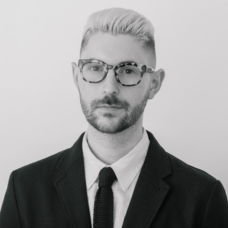Public Health Post: What was your focus of work before the Covid-19 pandemic?
Katie Swenson: My first job out of architecture school was an Enterprise Rose Fellow with an affordable housing non-profit in Charlottesville, Virginia. My goal was to bring high-quality design–design that reflected community member’s vision and delivered on high standards of green construction–to first-time homeowners. I learned how much impact the built environment has on people’s health and wellbeing.
This February, I joined MASS Design Group to help grow our affordable housing practice. I was attracted to MASS because of the core mission of the organization to research, build, and advocate for architecture that promotes justice and human dignity, as well as the diversity of the work–ranging from medical spaces to memorials–in the US and around the world.
This coming fall, I am publishing a book called Design with Love: At Home in America, a collection of stories that illuminate the conditions that cause housing insecurity, poverty, and injustice in communities across the country and delivers lessons on how design processes, artistic practices, and community engagement principles can improve the quality of life in vulnerable communities.
How has this pandemic changed your work and the way you think about public health?
MASS was founded with the belief that architecture is never neutral–it either heals or hurts–and this continues to be a guiding mission of our practice today. The power of architecture has never been more visible now that we’re in the midst of the pandemic. The first Monday morning we started working from home, we got a call from one of our partners at Boston Health Care for the Homeless. They were putting up tents that day to test and treat members of the community they serve. They asked if we could have a look at their plans. The science on Covid-19 is still evolving, and there are no tested design guidelines, but we set about employing the rules of thumb that have guided our work in infection control in the past–from managing tuberculosis, cholera, Ebola–and learning from our medical partners. Having helped Boston Health Care for the Homeless, we realized that others would need this same assistance, so we published Rules of Thumb for Limiting Contagion in Makeshift Facilities on our website for anyone to use.
Not only should our hospitals and medical facilities be designed to keep us safe and healthy, but so should our homes, schools, offices, and public spaces. In this time of crises, we are helping people think about their spaces differently. We published the study Redesigning Hospital Spaces on the Fly to Protect Healthcare Workers. We have also turned our attention to other realms, publishing Spatial Strategies for Restaurants and Rethinking Carceral Environments During and After Covid-19. Next, we will share the construction safety protocols that we are putting in place on our own construction sites as they begin to reopen and best practices to keep seniors healthy and connected in supportive housing.
What is a lesson learned during the response to Covid-19 that will inform your future work?
Architects are not on the frontline of this major public health crisis, but buildings are. We need to bring a greater understanding of designing for health into every aspect of the built environment. We are learning how important the idea of spatial literacy is. The pandemic has made clear that architects and public health practitioners are not the only ones who need to understand how the built environment affects our health, but that understanding how buildings participate in keeping people healthy–or not–is critical for us to rejoin our public lives.
The pandemic has also heightened awareness of existing injustices and demands action. We have always known the importance of safe housing, but as many of us are under shelter in place orders, we recognize homelessness as a public health emergency and commit to having safe, secure, high-quality housing for all. That prisons are so poorly suited for ensuring the health of individuals who are incarcerated has prompted an unprecedented decarceration. I hope that the pandemic mobilizes us to take action to address our systemic inequities.
Editor’s note: This is part six in a series of Profiles exploring the coronavirus pandemic with thought leaders in public health. You can read parts one, two, three, four, five, seven, and eight here.
Photo courtesy of Katie Swenson















